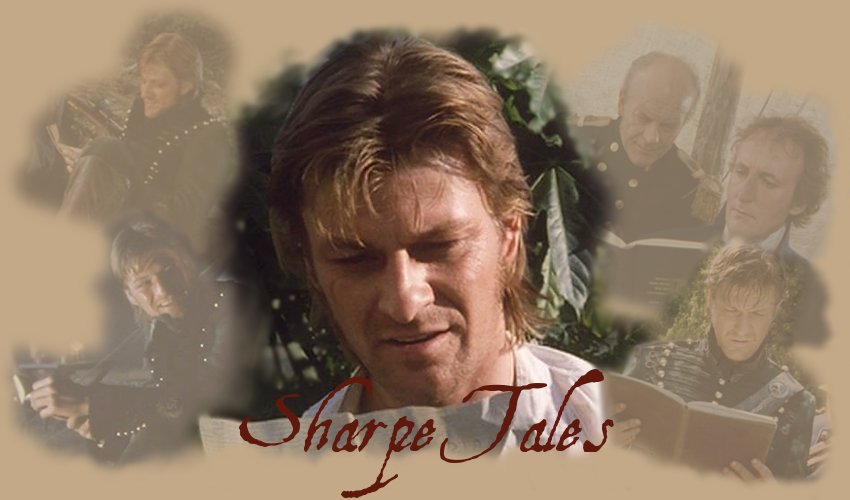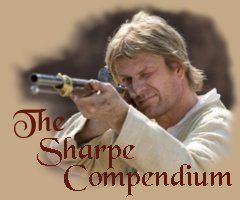|
Warning: Mature Adults only |
Historical Note
Historical Note
Sharpe and Lewrie are fictional characters. They share common stories of how their lives began. Both went to be raised in an orphanage, picked oakum and moved beyond the orphanage. They had a few times in their lives where they crossed paths but had not met.
Several of us as fans of both thought that it is fun and fitting that as they both ‘retire’ that they can meet old friends and acquaintances one last time. And, if this may be the last story for Sharpe, he can say farewell to some of his long-time supporters in London. Sharpe is reluctant to go to the First Waterloo Banquet, but does. In London he meets Lewrie for the first time.
Bow Street Runners are considered the first British police force and date to 1749. Magistrate Henry Fielding used ‘runners’ from his magistrate’s office on Bow Street to pursue law breakers. By 1815, they responded to investigations primarily in London. These runners were paid from public funds.
The Thames River Police was founded in 1800 deal with theft in the Pool of London. It continued to enforce the law along the river. In 1829,
The Metropolitan Police Service was started under Home Secretary Robert Peel. The Service was established to police Greater London. It’s headquarters was established in Wapping. Both the Bow Street Runners and the Thames River Police were merged into ‘The Met’.
Throughout the Lewrie books, he accumulates quite a collection of weapons. Many of them are unique and rare. They include a Ferguson Rifle, a Girandoni air rifle, a Fusil musket, a pair of Manton two-barrel pistols and a pair of Henry Nock pistols. Sharpe mentions that Lewrie should add a Nock volley gun to the collection. Besides knowing how to use these and use them well, Lewrie adapted some of the shooting techniques to his ships. He had his gunners notch his cannons to enable them to aim more precisely.
We have all come to know the Baker rifle that Sharpe carries. But, the Ferguson preceded it in use by British light troops. Major Patrick Ferguson invented the rifle and armed his elite unit to use it at the Battle of the Brandywine in 1777. It was a breech-loaded weapon. Due to high cost, low production output and being fragile only 200 were built. It was last used in the Southern Campaign of 1780 and discontinued when Ferguson was killed.
The Girandoni (Girardoni) rifle came about in 1780 as the Ferguson was going out. Designed by Bartolomeo Girandoni, it was a repeating rifle designed to be fired by compressed air or to be used as a flintlock. The Austrian army commissioned Girandoni to produce both flintlock and air versions of the gun. Approximately 1,300 were produced, only 100 as flintlocks. The gun had a 20 ball magazine that could all be fired before needing to be reloaded. Because it used air, it made very little noise and left to no smoke to mark the shooter. Like the Ferguson, it was difficult to produce, maintain and train the users. By 1816, the Austrian army retired the gun. One notable user was Merriwether Lewis and the expedition that he made with William Clark to map the Louisiana Territory.
Steamboat service began on the Thames about 1815. Three boats, the Margery, The Duke of Argyll and the Richmond, began to take passengers on the Margate, Gravesend and Richmond routes. Despite the dangers of exploding boilers and the turning paddle wheels, passenger volumes grew each year. For nearly thirty years, steamships were the primary way that people moved from the sea to London. Once the railroads were built, passengers took steamboats less often.
Cricket (Authors Note. Ugh! After researching this sport more than I thought that I would need to, I still don’t understand it.) Richard Sharpe and Rider Sandman are mentioned to have played cricket in and out of the army. Sharpe is reputed to be a ‘wicked’ bowler. In Sharpe’s Family, I have him learning to play at Marylebone while he was learning how to be a thief and living with Maggie Joyce.
One of the stories mentions that a reason that Major Dunnet disliked Sharpe was because Sharpe repeatedly made Dunnet look bad on the pitch.
By the time of Wellington’s banquet, the field that Sharpe had learned on was gone. Thomas Lord’s Old Ground at Marylebone was not renewed for lease. In 1808, he leased two plots on The North Bank area of St. John’s Wood Estate.
The field that was near Lisson Grove that Sandman would have played on before he went to war was known as Lord’s Middle Ground. By 1814, that ground was claimed to build Regent’s Canal. Lord moved all cricket matches and operations to the field at St. John’s Wood.
The Duke of Wellington bought Apsley house from his brother Richard in 1817. He employed the architect Benjamin Dean Wyatt to carry out renovations. Two years later, the first phase, which included a three-story extension to the north east, began. This extension included a State Dining Room, bedrooms and dressing rooms. When the work was finished, Wellesley decided to commemorate the victory at Waterloo by hosting a banquet. He set the date for the first for June 18, 1822. There were 1,770 potential guests. But, the State Dining Room holds only 36.
In 1829, after Wellington became Prime Minister in 1828, the banquet moved to the Waterloo Gallery room after the second phase of renovation were completed. Phase two included a new staircase and the "Waterloo Gallery" on the west side of the house. Now hosts 74 attendees.
Over the thirty years that Wellington hosted the banquets, only 179 attended. These were an elite few at an all male event. Many of British society tried to be invited or to spectate. Some, including the media writers of the day, offered to pay admission to be privileged to stand in the wings to observe. Wellington refused them. Many did use the banquet to host and attend parties of their own. The banquet became an annual event for the city.
Sharpe did not like such affairs. In fact he did all that he could to avoid them. But through the years, when Wellesley called, Sharpe responded. Wellington would continue to invite Sharpe to the banquet.
At home, he has his family and friends. Since the banquets occur near his birthday, he chooses to celebrate his birthday at home. Perhaps he will attend another banquet, but he will always remember this first Waterloo Banquet. For Richard Sharpe, 1st Baronet tof Wapping, Colonel of the South Essex, that first banquet is Sharpe’s Banquet.

